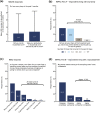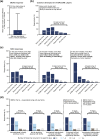Impact of Migraine on Daily Life: Results of the Observational survey of the Epidemiology, Treatment, and Care of Migraine (OVERCOME [Japan]) Study
- PMID: 38175489
- PMCID: PMC10787723
- DOI: 10.1007/s40120-023-00569-3
Impact of Migraine on Daily Life: Results of the Observational survey of the Epidemiology, Treatment, and Care of Migraine (OVERCOME [Japan]) Study
Abstract
Introduction: The impacts of migraine on daily life, including daily activities and fundamental health indicators (sleep and mental health), have not been described in detail for people with migraine in Japan.
Methods: The cross-sectional ObserVational survey of the Epidemiology, tReatment, and Care Of MigrainE (OVERCOME [Japan]) study was conducted between July and September 2020. Impacts of migraine on housework, family/social/leisure activities, driving, and sleep were assessed using questions from the Migraine Disability Assessment (MIDAS), Migraine-Specific Quality-of-Life Questionnaire, and Impact of Migraine on Partners and Adolescent Children scales and questions developed for OVERCOME (Japan). The Migraine Interictal Burden Scale (MIBS-4) evaluated burden on days without headaches. Depression and anxiety were assessed with the Patient Health Questionnaire (PHQ-8) and Generalized Anxiety Disorder (GAD-7) scales, respectively. Impacts on daily life were also described across MIDAS/MIBS-4 categories.
Results: Among 17,071 respondents with migraine, 24.8% required assistance with housework at least sometimes. Migraine interfered with relationships, leisure, and social activities at least sometimes for 31.8%, 41.6%, and 18.0% of respondents, respectively. Between headache days, 26.8% of respondents worried about planning social/leisure activities at least sometimes. Among respondents living with family (N = 13,548), migraine also had impacts on participation in and enjoyment of family activities. Among respondents who drove (N = 10,921), 43.9% reported that symptoms interfered with driving at least sometimes. Migraine interfered with sleep and mood at least sometimes for 52.7% and 70.7% of respondents, respectively. PHQ-8 and GAD-7 thresholds for clinical depression and anxiety were met by 28.6% and 22.0% of respondents, respectively. Impact of migraine on daily life increased with increasing severity of MIDAS/MIBS-4 categories.
Conclusion: The burden of migraine on daily activities, sleep, and mental health is substantial for people with migraine in Japan. In clinical practice, it is important to evaluate the impact of migraine on daily life in addition to migraine symptoms.
Keywords: Automobile driving; Daily life; Family; Household work; Japan; Leisure activities; Mental health; Migraine disorders; Sleep; Social participation.
© 2024. The Author(s).
Conflict of interest statement
Etsuko Awaki reports lecture fees/honoraria from Amgen, Daiichi Sankyo Company, Limited, Eli Lilly Japan K.K., and Otsuka Pharmaceutical Co., Ltd. Takao Takeshima received research funding/collaborative research expenses from Biohaven, Ltd., Eisai Co., Ltd., Eli Lilly Japan K.K., Lundbeck Japan K.K., and Shionogi & Co., Ltd., and reports personal fees from Amgen Astellas BioPharma K.K., Daiichi Sankyo Company, Limited, Eli Lilly Japan K.K., and Otsuka Pharmaceutical Co., Ltd. Takao Takeshima also acted as an advisor to Hedgehog MedTech, Inc. and Sawai Pharmaceutical Co., Ltd. Yasuhiko Matsumori reports personal consultancy fees from Amgen Astellas BioPharma K.K., Daiichi Sankyo Company, Limited, Eli Lilly Japan K.K., and Otsuka Pharmaceutical Co., Ltd. during the conduct of the study. Koichi Hirata received research funding from the Japanese Ministry of Health, Labour and Welfare and the Japan Agency for Medical Research and Development, and reports personal fees from AbbVie GK, Amgen Astellas BioPharma K.K., Daiichi Sankyo Company, Limited, Eisai Co., Ltd., Eli Lilly Japan K.K., MSD Co., Ltd., Otsuka Pharmaceutical Co., Ltd., Pfizer Japan Inc., and Sawai Pharmaceutical Co., Ltd. Naoki Miyazaki and Ryo Takemura are employees of Keio University. Keio University received funding from Eli Lilly Japan K.K. for the statistical analyses reported in this manuscript. Satoshi Osaga, Yoshinori Tanizawa, and Mika Komori are employees of Eli Lilly Japan K.K. and own minor shares in Eli Lilly and Company.
Figures






References
-
- Steiner TJ, Stovner LJ, Jensen R, Uluduz D, Katsarava Z, on behalf of Lifting The Burden: the Global Campaign against Headache Migraine remains second among the world’s causes of disability, and first among young women: findings from GBD2019. J Headache Pain. 2020;21(1):137. doi: 10.1186/s10194-020-01208-0. - DOI - PMC - PubMed
Grants and funding
LinkOut - more resources
Full Text Sources
Miscellaneous

